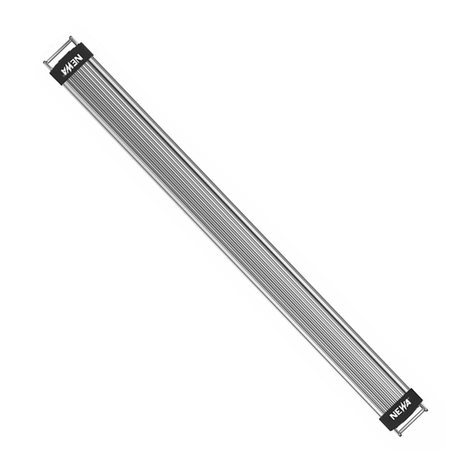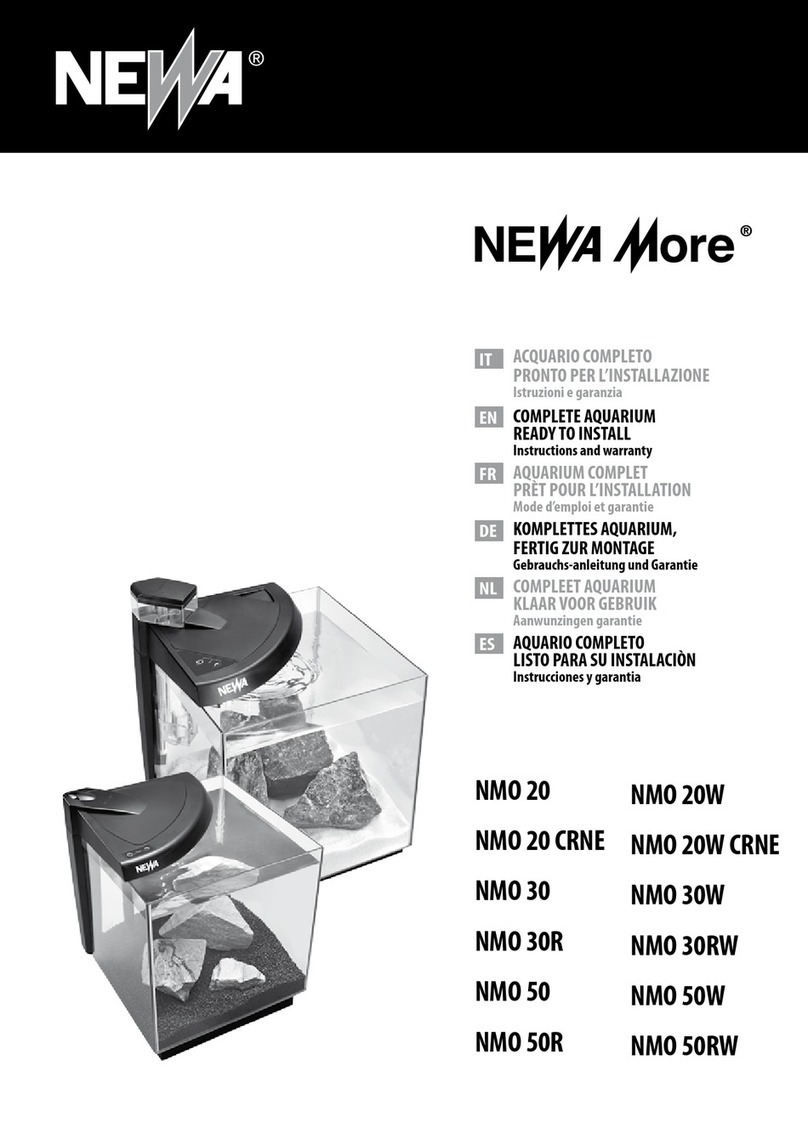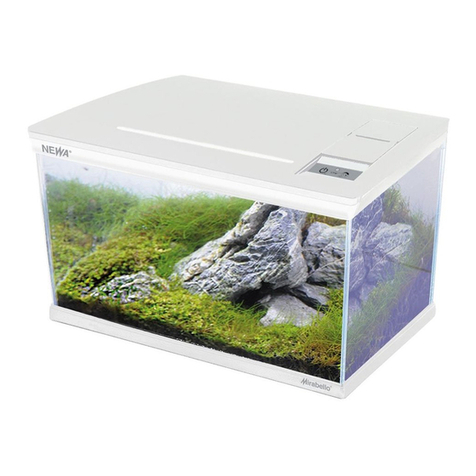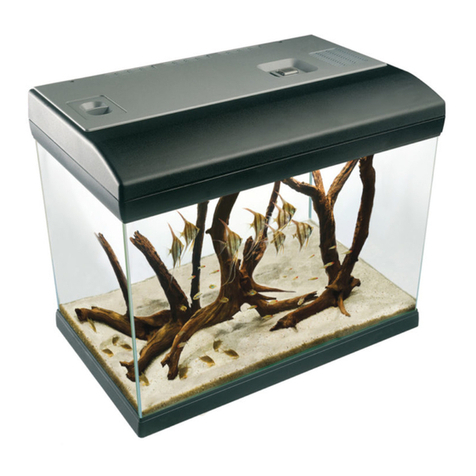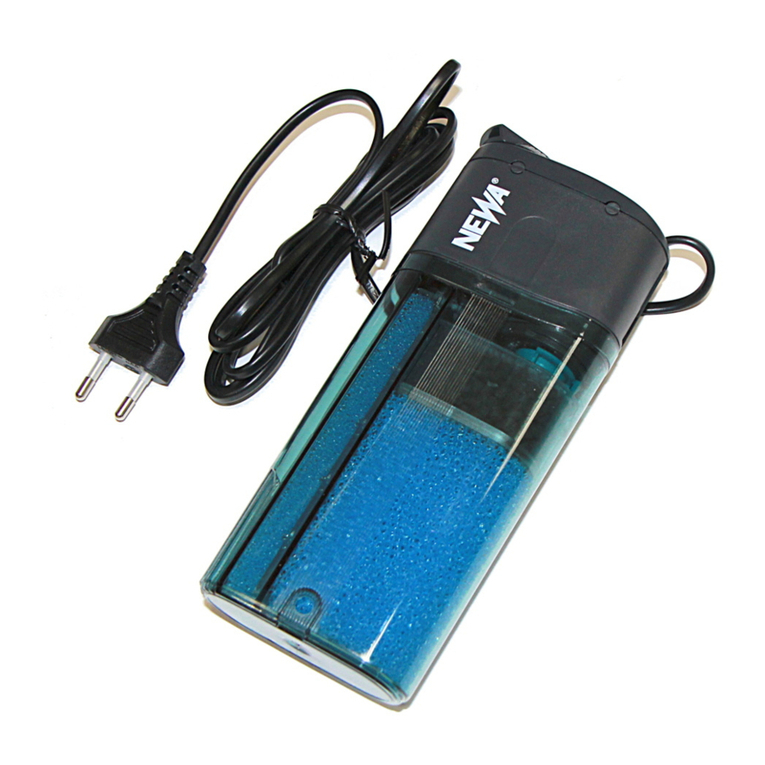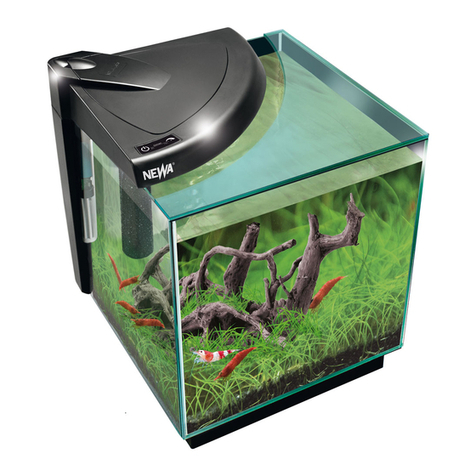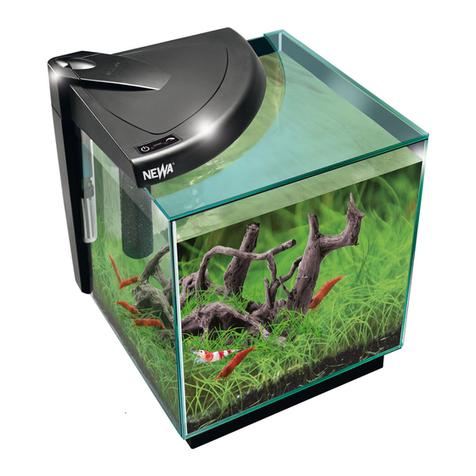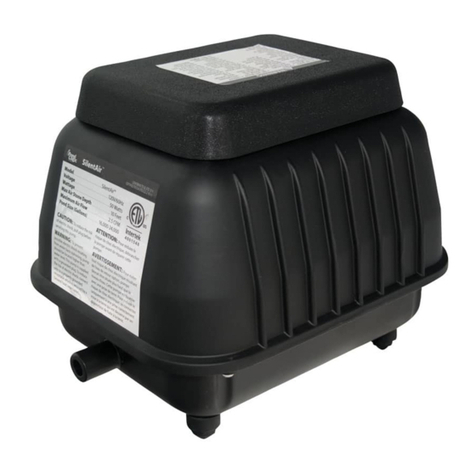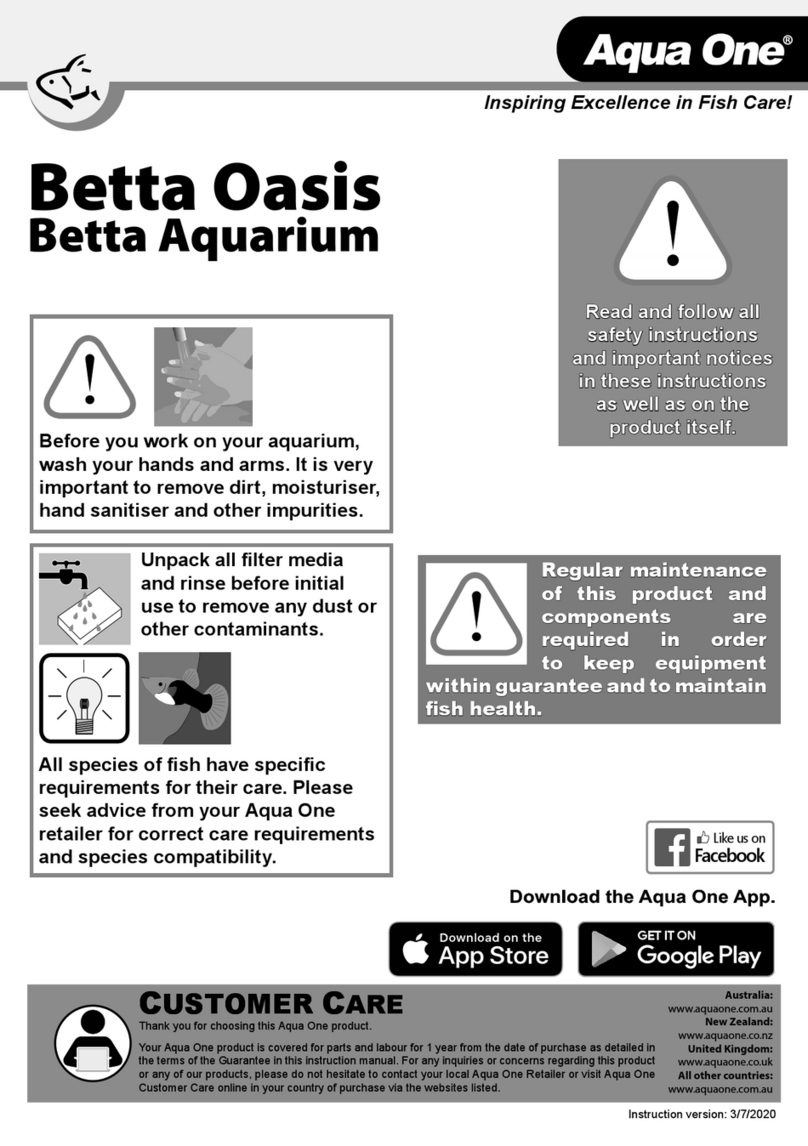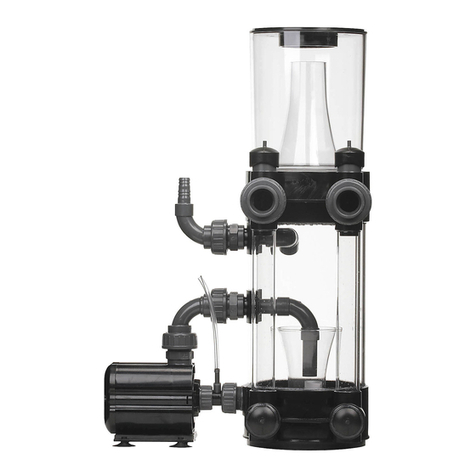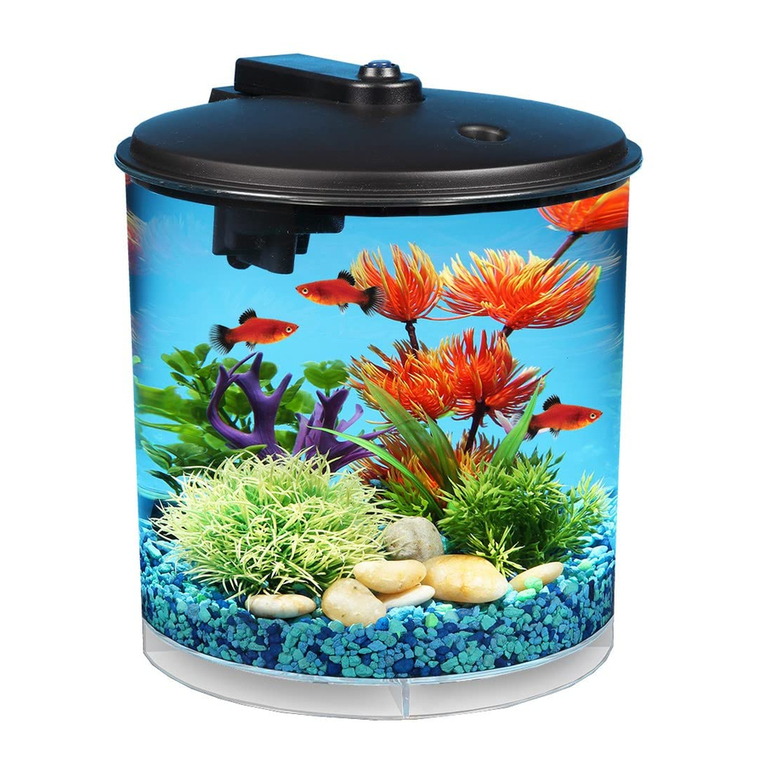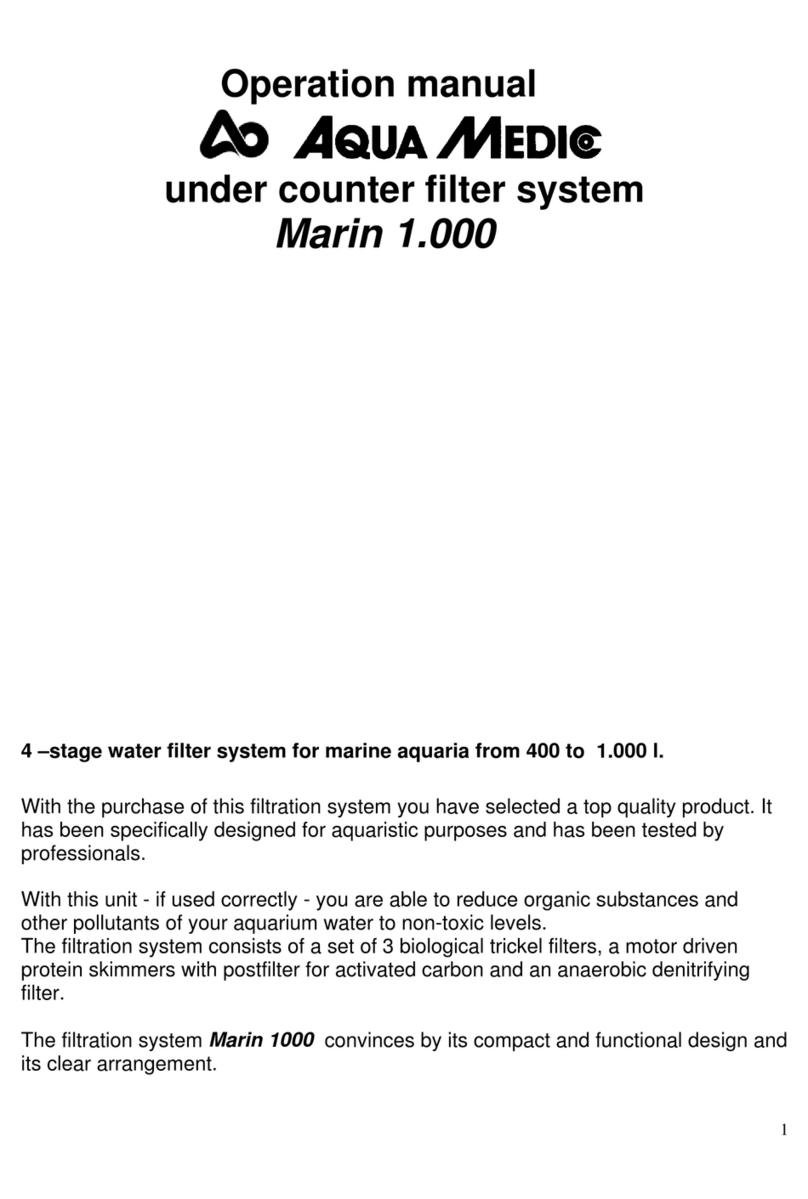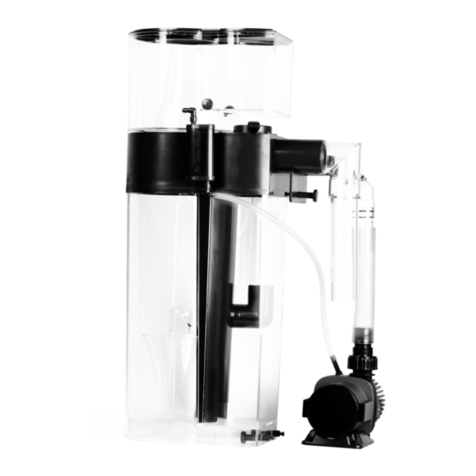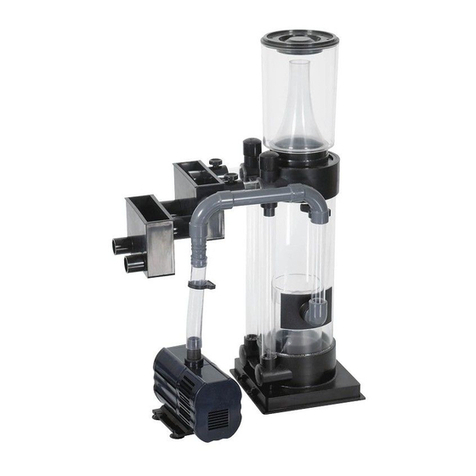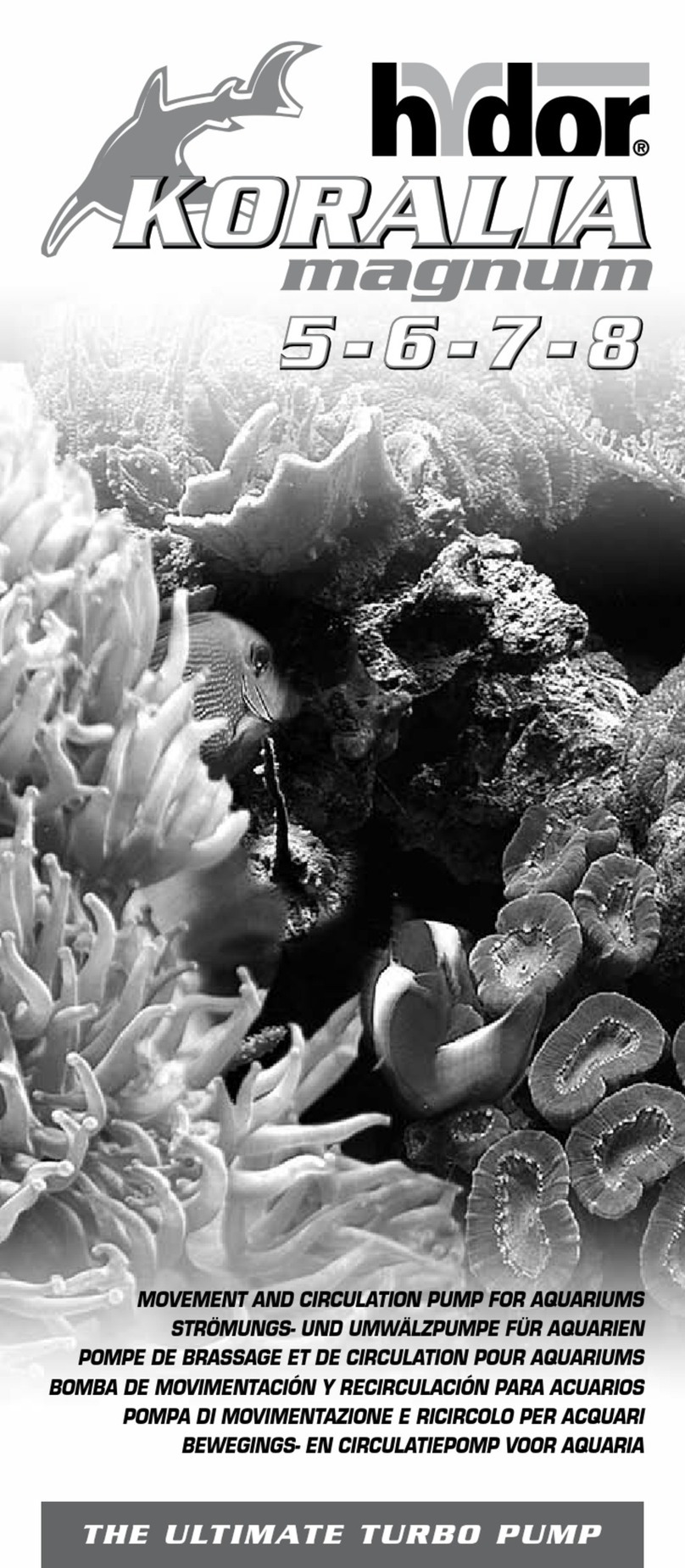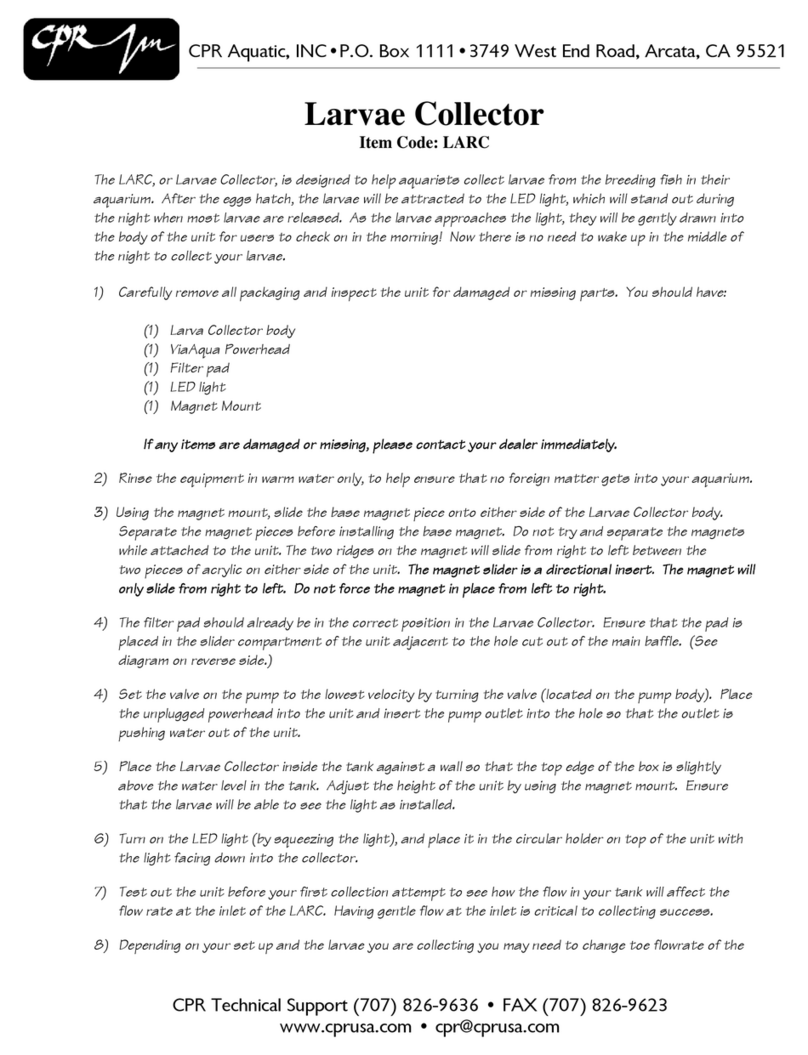
V. INSTALLAZIONE E ACCENSIONE DELL’ACQUARIO
V.a PULIZIA DELLA VASCA
Pulire accuratamente l’interno della vasca utilizzando un panno umido o una spugna pulita. IT
Non utilizzare detergenti o spugne venute a contatto con saponi, solventi o altri composti chimici.
V.b MESSA IN FUNZIONE
Aprire il coperchio e sganciarlo dalle appositi sedi, premendo con un dito da un lato (fig. 6). Togliere del tutto il coperchio dalle sedi
(fig.7). Passare i cavi di alimentazione della pompa, della lampada e riscaldatore negli appositi fermacavi presenti sulla cornice
dell’acquario (fig.8). Riposizionare il coperchio nelle sedi e chiudere (fig. 9).
V.c FILTRAZIONE
IL FILTRO È UN SISTEMA DI DEPURAZIONE A “CICLO CHIUSO” CHE RENDE L’ACQUARIO COMPLETAMENTE SVINCOLATO DAL COLLEGAMENTO
CON SORGENTI E SCARICHI D’ACQUA (fig. 10). Il filtro è uno strumento fondamentale nella gestione dell’acquario, senza il quale
occorrerebbero cambi d’acqua molto frequenti. Il potente ed efficace ha lo scopo di far circolare e “pulire” l’acqua, trattenendo sia le
impurità in sospensione sia le sostanze invisibili disciolte che derivano da escrementi di animali, da foglie morte e da residui di cibo.
V.d ACCENSIONE DELL’ACQUARIO
ATTENZIONE: Collegare alla rete di alimentazione elettrica gli apparecchi elettrici solo
dopo aver allestito l’acquario a proprio piacimento e riempitolo d’acqua.
1.Introdurre le spine nelle prese di alimentazione, seguendo con attenzione le istruzioni per la
sicurezza descritte al capitolo I. Da questo momento i cavi di alimentazione non andranno mai
scollegati se non in occasione delle periodiche operazioni di pulizia e di manutenzione.
2.Verificare il funzionamento dei vari apparecchi (nel caso di malfunzionamenti fare riferimento al cap. VII):
•Dalla mandata della pompa deve uscire acqua;
•La spia luminosa del riscaldatore deve accendersi qualora la temperatura dell’acqua risulti inferiore a quella impostata;
•Agendo manualmente sui pulsanti d’accensione delle luci queste si dovranno attivare.
3.Attendere che la temperatura dell’acqua raggiunga il valore impostato nel riscaldatore. Si consiglia di verificare
periodicamente la temperatura dell’acqua perché i riscaldatori possono avere una piccola tolleranza sul valore impostato.
4.Procedere all’eventuale inserimento dei pesci secondo la propria esperienza e nel rispetto delle regole di
“buona prassi” relative all’acquariologia.
VI. GESTIONE E PULIZIA
OGNI SETTIMANA:
a. Pulire i cristalli interni dell’acquario con una spazzola magnetica (non inclusa nella
confezione) per eliminare la patina di alghe (fig. 11).
b. Pulire con una spugna o un panno bagnato la protezione del sistema illuminante a LED (fig. 12).
c. Controllare il livello dell’acqua. Se troppo basso, riportarlo al livello desiderato con
acqua avente circa la stessa temperatura di quella dell’acquario.
d. Controllare la temperatura dell’acqua con apposito termometro ad immersione.
OGNI MESE:
a. Sostituire la cartuccia del filtro NEWA Cobra scegliendo tra quelle disponibili nella gamma NEWA AQUA media filter cartridges.
OGNI 3 MESI:
a. Sciacquare la cartuccia filtrante in spugna del filtro NEWA Cobra con acqua
prelevata dall’acquario, al fine di preservare le colonie batteriche.
b. Pulire il fondo dell’acquario aspirando delicatamente l’eventuale sedimento depositatosi. Si consiglia l’uso
dell’aspira-rifiuti NEWA Pgr. Questa operazione deve essere fatta con molta cautela al fine di non sradicare le
piante e lasciare scoperte le radici. c. Pulire il rotore e la girante della pompa da eventuali incrostazioni.
9



















